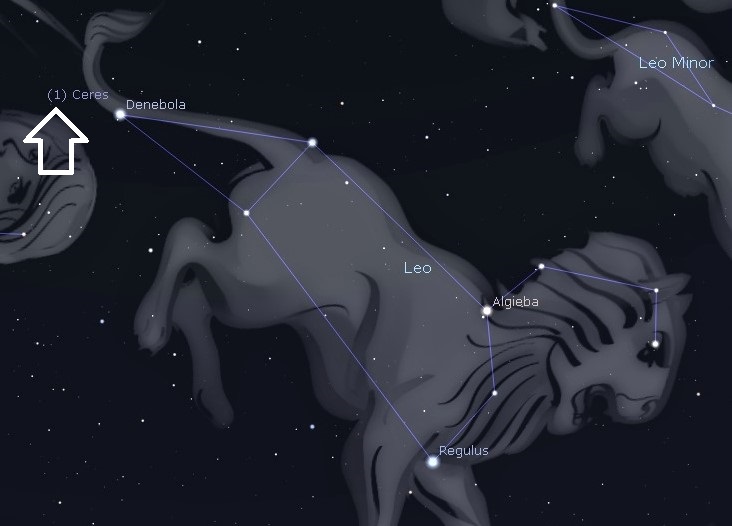This Week’s Sky at a Glance, 2023 June 3 – June 10
This Week’s Sky at a Glance, 2023 June 3 – June 10
Asteroids, like comets, are solar system objects that some amateur astronomers like to collect; that is, identify them at least once with binoculars or a telescope. They are not as interesting to see as comets are, being just points of light, but they are often more challenging to identify. If you are lucky one might be near an easily identifiable star or group of stars, and if you are even luckier you might be able to detect its movement relative to a star over an evening.
The first asteroid was discovered on January 1, 1801, and Ceres was initially called a planet once its orbit was calculated. In the 18th century a mathematical progression known as the Titius-Bode Law was formulated which fit the distances of the six known planets from the Sun. Uranus was discovered in 1781 and its distance fit that formula, but there was an inexplicable gap between Mars and Jupiter. Ceres filled that gap nicely, but over that decade three more new “planets” were found within the gap.
Ceres is by far the largest asteroid and it is now categorized as a dwarf planet along with distant Pluto, Eris, Makemake and Haumea. It is currently the brightest asteroid and it can be seen within a binocular view of Denebola, the tail star of Leo the Lion. However, you will likely have difficulty distinguishing it from the stars. The Heavens-Above website has an Asteroids section which includes two maps for each of the brighter asteroids; one with a wide-field view of the constellations in the area, and an expanded inset with a binocular-size view showing the asteroid among the nearby stars.
This Week in the Solar System
Saturday’s sunrise in Moncton is at 5:30 am and sunset will occur at 9:04 pm, giving 15 hours, 34 minutes of daylight (5:38 am and 9:06 pm in Saint John). Next Saturday the Sun will rise at 5:28 am and set at 9:09 pm, giving 15 hours, 41 minutes of daylight (5:36 am and 9:11 pm in Saint John).
The Moon is full just past midnight this Saturday/Sunday, passing near Saturn next Friday morning and reaching third quarter phase next Saturday. Mars is within a binocular view to the east of the Beehive star cluster this weekend. Venus is at its greatest elongation from the Sun on Sunday, setting after midnight all week. Mercury rises around 4:40 midweek, brightening enough over the next two weeks to possibly be seen with binoculars in twilight. Rising an hour before Mercury, Jupiter is much easier to locate.
On Sunday evening at 8 pm, tune in to the Sunday Night Astronomy Show via the Facebook page or YouTube channel of Astronomy by the Bay.

